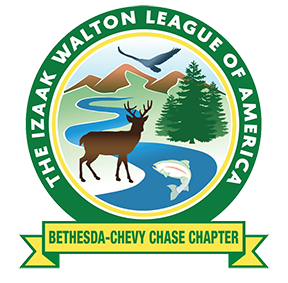For the Birds: Managing the PUMAs on the Conservation Farm
by Jim Tate 202 841-2056 jim@tate-tate.us
The journals of the early naturalists in eastern North America revealed an unexpected nesting situation for a large colonial swallow that they encountered: “The Purple Martin (Progne subis) nested almost exclusively in houses provided by man.”
The early journals reveal that Native American villages commonly were the site of a colony of PUMAs, as they are designated by ornithologists. The swallows nested in dried empty gourds strung from poles and dead trees for their sole use. There were no Starlings or House Sparrows in North America at that time.
These PUMA colonies provided an early warning system for the people with their loud calls and agitated flight when they were disturbed. Trespassers and enemies approaching the open village grounds from the woods were announced by the birds much like a watchdog protects your home.
Speculation that the PUMAs preyed on biting flies and mosquitoes may also have merit. These aerial predators probably don’t take prey as small as mosquitoes. But they do take dragonflies and other known mosquito predators. We still have a lot to learn about PUMA food preferences and aerial insect abundance in our age of insecticides.
The PUMA still nests nearly exclusively in manmade structures. About twenty-five years ago, when Lin and I first started hanging around at B-CC IWLA, we discovered the rotting remains of a wooden PUMA apartment house lying in the weeds near the tool shed. And, as we walked around the Conservation Farm we found several nest boxes for cavity-nesting birds. These signs of a past PUMA colony and a past nest box program were probably the result of the Och family father and son team who initiated a Scout project on the Conservation Farm.
With the help of willing B-CC volunteers, Lin and I set up two multi-compartment PUMA houses and began NestWatch and FeederWatch programs on the IWLA Conservation Farm. These three programs have provided us with many hours of enjoyable time in the field on what was then a much smaller IWLA Farm. We also found that managing the nest boxes, PUMA Colony, and bird feeders was a lot of work if we wanted to do it right. But, what was ‘right’?
Fifty years ago, Dr. J. Jackson and I conducted a public response survey of PUMA colony landlords all across Eastern North America seeking information about Purple Martin nest site characteristics, as well as House Sparrow, and Starling populations. Subsequent studies have shown some of our conclusions to be supported, others are still questionable and need more research. Here is a sample of what we found. You can see the original scientific paper with data and conclusions here:
20030101-Nest-Box-Use-by-PM-p0435-p0449- The height of houses above the ground has no effect on the rate of occupancy by any of the species surveyed.
- Houses farther than 30 m from the nearest building had fewer martins than houses closer to buildings. PUMAs like us!
- Fewer martins and more sparrows occupy compartments as height of nearby vegetation increases.
- Martins prefer white houses while Starlings favor darker colored ones.
- Suburban colonies have fewer martins than urban or rural colonies.
- Rural martin colonies tend to have fewer House Sparrows than suburban or urban colonies.
- The presence of a pond, lake or stream within sight of the houses results in greater occupancy by martins,
- Competition between martins and House Sparrows results in fewer martins occupying a colony. Starlings are nest predators, but because House Sparrows take over several compartments, they are worse for martins.
Today, the PUMA program is actively managed and the responsibilities shared by a team of wonderful volunteers:
- Larry Anderson, Chairman of the Wildlife Committee watches over the PUMA Colony with great care, paying attention to the details that are so important to success. This year, Larry purchased and installed a Gourd Tree next to the two PUMA apartments on the Grassland Reserve just east of the Chapter House.
- Diane Seward works diligently on PUMAs along with Theresa Zmola, and Pete Cappellino.. (Also see Diane’s report on the FeederWatch Program in this newsletter.)
- Tom Lamkin makes sure our access to the PUMA colony is mowed during the nesting season, and Phil Taylor mows the Grassland Reserve annually which is essential to PUMA management.
A great big thank you to all of our wonderful PUMA volunteers. Their motto rings throughout the B-CC Conservation Farm and the Montgomery County Ag Reserve:
WE MANAGE THE PUMAS AT THE B-CC IWLA CONSERVATION FARM!

